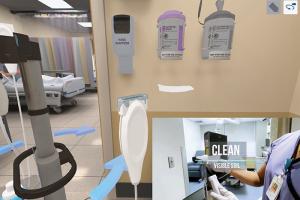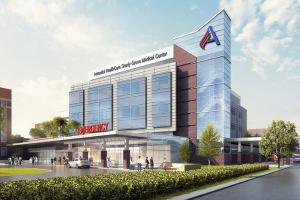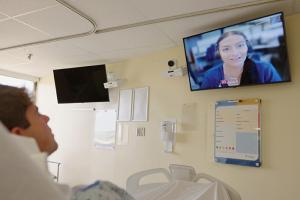Clearing the lines of communication

Safety dispatchers process incoming alerts to quickly disseminate messages to all staff or groups.
Image courtesy of Singlewire Software LLC
Riverside Healthcare, Kankakee, Ill., operates the Riverside Medical Center and several other locations spread across five counties throughout the heartland of Illinois in communities south of the south suburbs of Chicago. Its comprehensive network of services ranges from immediate care, diagnostic imaging and laboratory services to primary care, specialty care, and senior assisted living and memory care living communities.
Because of the nature of its operations, which touches urban, suburban and rural communities, the health system needed a better way to manage its critical communications system and ensure important messages would reach each location in an expedited manner. It also needed to update its paging system to a more versatile mobile solution.
Gabriel Vasquez, security manager for Riverside Healthcare, says a new system would also allow the organization to take a proactive approach to prevent dangerous situations from occurring.
Riverside implemented a solution from Singlewire Software LLC, Madison, Wis., called InformaCast in its facilities, giving it the ability to quickly disseminate critical information to large groups of people.
Vasquez’s team uses InformaCast as a communication tool to keep large numbers of people and targeted groups, like senior leadership, informed of potential crisis situations. As soon as a switchboard operator hits a button to activate a message, it is sent to the mobile devices of the people that need to be informed. With more than 400 people using the InformaCast Mobile app, information spreads quickly.
According to Erik Devine, chief information and security officer for Riverside Healthcare, the system uses Cisco and other IP technologies to reach various communication systems in ways they never could before.
“We can pass information from a phone to a desktop to an IP speaker to mobile devices to reach people anywhere at any time,” Devine says. “This makes people well aware of anything that is happening at our facilities.”
Messages can cover everything from basic notifications and downtime notices to severe codes.
When an emergency occurs, local police officials contact the hospital to notify them to expect an influx of patients. This activates a response plan, which includes communicating that there has been an incident to a large group of people who can help manage the incoming situation.
For instance, when a school in the area had an incident involving carbon monoxide poisoning that sent a large number of patients to one of Riverside’s hospitals, Vasquez issued a Code Yellow, which is used when they need assistance from all departments. These groups include doctors, security personnel, nursing staff, behavioral health, mental health specialists and chaplains. Vasquez was able to leverage InformaCast to alert everyone and begin coordinating the response needed to assist the situation.
The information technology team, security personnel and switchboard operators all work together to manage InformaCast and determine best practices for Riverside and its facilities that minimizes the need to have people call back for more information, resulting in speedy response times.
InformaCast is initiated through the Riverside switchboard operators who then deliver the InformaCast notification. Messages are sent to mobile devices through a mobile app. This provides recipients with the details they need about the situation without requiring them to call for further information.
Riverside also can inform staff of severe weather events that can impact the day-to-day functions of remote facilities, such as heavy snow that can prevent or delay staff from arriving to work. These locations can monitor weather and determine whether staff need to be sent a message through InformaCast.
“It’s a very cost-effective system,” Devine says. “We’re very happy with the output and input we have into the system from multiple departments. It’s very easy to use and administer … It’s been a very solid solution for Riverside Healthcare.”
In the future, Riverside is looking to utilize the system’s desktop phone capabilities and expand use to include weather alerting and assist with situations such as active shooters.




